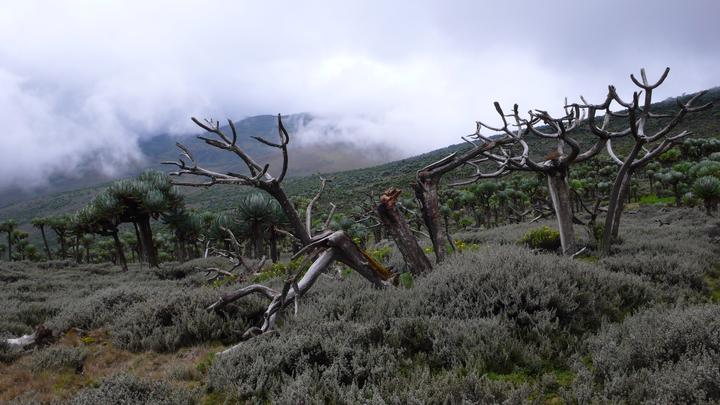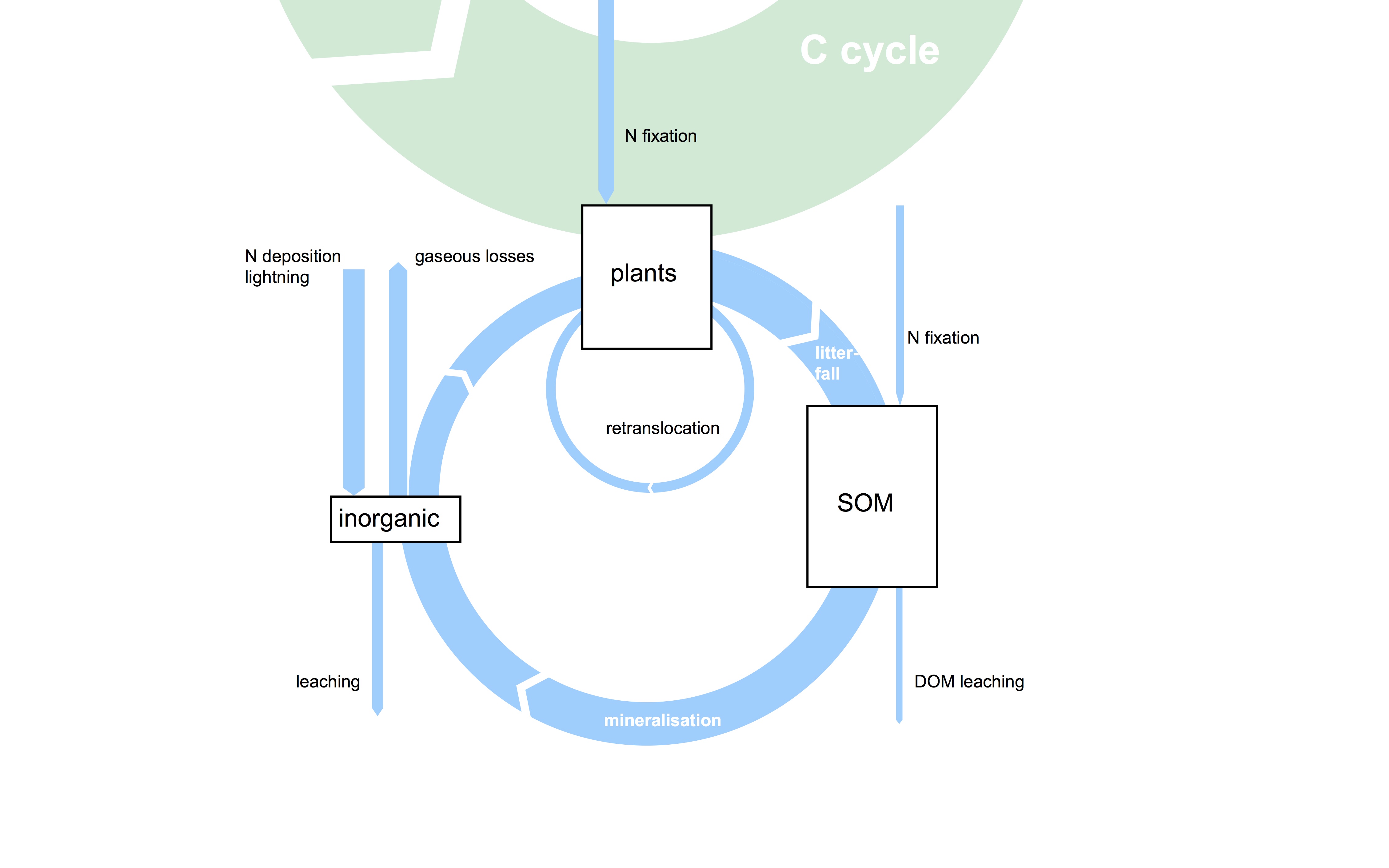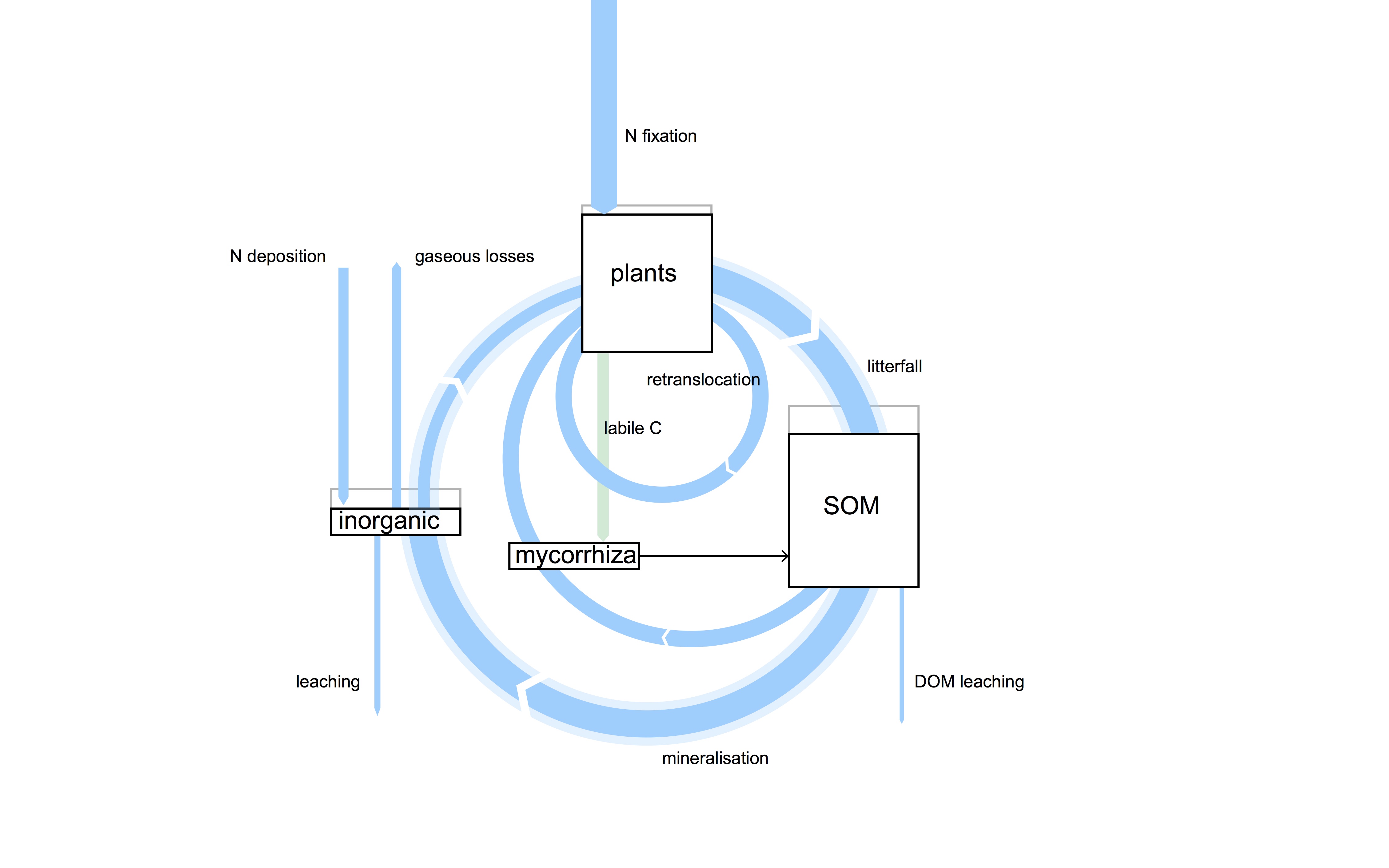The Big N Question: What controls rates of nitrogen fixation and losses?

To address this question, we have to start with the notion that, on the long term, N losses from ecosystems via gaseous and leaching pathways have to be compensated by N inputs. Natural, that is non-human affected, N inputs are small and have been shown not to be sufficient to explain the measured N balance. Biological N fixation (BNF) must account for the remainder. However, drawing a complete picture of the N budget in terrestrial ecosystems has been notoriously difficult, because BNF is practically impossible to measure and estimated rates of global BNF range from around 200 TgN (Cleveland et al., 1999) to 58 TgN (Vitousek et al., 2013). Today, research is stuck.
This lack of understanding of the amount, but also of the controls on BNF introduces a “wildcard” for carbon (C) cycle projections under future climate change. Early C-only vegetation models suggested massive C sequestration under rising atmospheric CO2. However, for every C fixed into organic compounds, a relatively tightly constrained amount of N is required. But where does this N come from? Hungate et al. (2003) argued that these C-only model’s predictions were unrealistic because the implied additional N required for C sequestration would have to be provided by additional BNF, and that the required amounts of additional BNF were not “realistic”. But what is realistic?
More recently, vegetation models have been developed with the aim of introducing more “realism”. One such aspect is the coupling of C and N cycles. Indeed, this new generation of models generally does suggest less C sequestration, mostly for reasons of progressive N limitation (PNL) (Luo et al., 2004), meaning that additional N fixed in organic compounds leads to a depletion of N availability in soils because ecosystems can’t bring in enough N and thus run into a PNL. Is this realistic?
Ecosystem manipulation experiments and observations along gradients of varying N availability draw a different picture. The C allocation of plants appears to be flexible and responding to the availability of nutrients in the soil. Symbiotic associations between plants and mycorrhiza (root fungi) and N-fixing bacteria are away for plants to overcome nutrient shortage. However, these come at a cost of feeding C to symbionts. Also the “blind” exudation of labile C by plants into the soil stimulates microbial soil decomposition and N mineralisation and thus improves N availability. Apparently, getting enough N is not impossible but is also not free.

N cycling in land ecosystems. Reference state.

Hence, a way of advancing the mechanistic understanding of the controls on N fixation could be by looking at the ecosystem energy economy – that is the C economy. N fixation is a particularly costly option to acquire N. Feeding the nitrogenase enzyme to break up the sturdy N2 bond is expensive. Modeling these trade-offs is one of the big goals of my work here at Colin Prentice’s lab.
What observations can be used to test such modeling approaches? Free Air CO2Enrichment (FACE) experiments have generated plenty of data to gain a better insight into C allocation changes under rising CO2. And indeed, more N appears to get bound into plant biomass when photosynthesis increases. However, knowing where this additional N is coming from remains unresolved. Either, it’s provided by accelerated soil organic matter decomposition, stimulated by more below-ground plant C allocation, or it’s brought in from the atmosphere via BNF.
If the first option is the case, then what happens to soil organic matter (SOM) stocks under continuing CO2 increase in the decades and centuries to come? A way to gain a better understanding of ecosystem responses to large-scale environmental change is to look into the past. The shift from the last ice age to the present warm period provides an analogue for future climate change (although from a different background and at a much slower pace). Again, if no additional N was brought into ecosystems back then, SOM stocks would have had to be tapped. Did they decrease indeed? Also, if no additional N was brought in, then ecosystems would indeed have run into a progressive N limitation. This would also imply that inorganic N stocks were depleted and lead to much less gaseous N losses and hence N2O emissions. Is this the case?
Spahni et al. (in prep.) now show that terrestrial N2O emissions did indeed increase as CO2went up after the last ice age. This may be interpreted as a strong indication that no such PNL occurred. Hence, BNF must have increased along with the demand for N as ecosystems sequestered more C.
The bottom line is that measurements of BNF are notoriously difficult but there are other, indirect constraints on how ecosystems respond to changes in N availability. Apart from manipulation experiments, analyses along environmental gradients, and evidence from palaeo-information, also the isotopic composition of 15N/14N may be used to estimate rates BNF. All this data has to be exploited to constrain models and get a better understanding of whether BNF increases in the future and permits more C to be sequestered in land ecosystems.
References
Cleveland, C., Townsend, A., Schimel, D., Fisher, H., Howarth, R., Hedin, L., Perakis, S., Latty, E., Von Fischer, J., Elseroad, A., and Wasson, M.: Global patterns of terrestrial biological nitrogen (N-2) fixation in natural ecosystems, Global Biogeochem. Cycles, 13, 623–645, doi:{10.1029/1999GB900014}, 1999.
Vitousek, P. M., Menge, D. N. L., Reed, S. C., and Cleveland, C. C.: Biological nitrogen fixation: rates, patterns and ecological controls in terrestrial ecosystems, Philos. T. Roy. Soc. B, 368, doi:{10.1098/rstb.2013.0119}, 2013.
Hungate, B., Dukes, J., Shaw, M., Luo, Y., and Field, C.: Nitrogen and climate change, Science, 302, 1512–1513, doi:{10.1126/science.1091390}, 2003
Luo, Y., Su, B., Currie, W., Dukes, J., Finzi, A., Hartwig, U., Hungate, B., McMurtrie, R., Oren, R., Parton, W., Pataki, D., Shaw, M., Zak, D., and Field, C.: Progressive nitrogen limitation of ecosystem responses to rising atmospheric carbon dioxide, Bioscience, 54, 731–739, 2004.